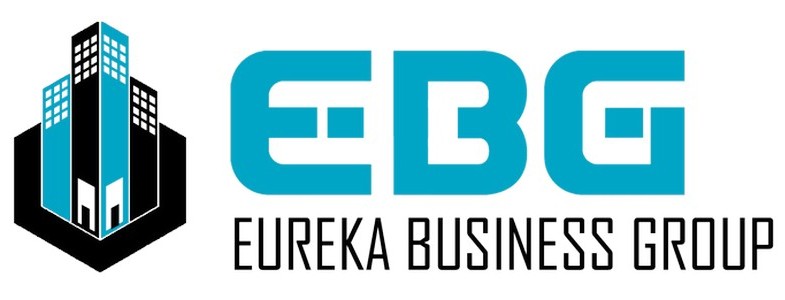- Home
- Retail
- Retail Investors Resources
- How to Evaluate Market Demand for Retail Spaces!
How to Evaluate Market Demand for Retail Spaces!
In the ever-evolving world of retail, understanding market demand is crucial for any retailer looking to establish a presence in a new location. Evaluating market demand for retail spaces is not just about analyzing current trends; it involves a comprehensive approach that considers various factors, including demographics, competition, economic indicators, and consumer behavior. This blog post will guide you through the key steps to effectively evaluate market demand for retail spaces, helping you make informed decisions for your business.
1. Understand Your Target Market
The first step in evaluating market demand is understanding who your target customers are. Identify their demographics, including age, gender, income level, and lifestyle preferences. This information can be gathered through surveys, market research reports, and public databases. For instance, if you’re planning to open a high-end clothing store, you’ll want to locate your business in an area with a higher concentration of affluent consumers.
Tips for Identifying Your Target Market:
- Use Existing Data: Leverage market research reports and census data to understand the demographics of potential locations.
- Conduct Surveys: Create surveys to gather insights from potential customers about their shopping preferences and habits.
- Analyze Online Behavior: Utilize online analytics tools to understand your target audience’s preferences and interests.
2. Analyze the Competition
Understanding the competitive landscape is vital when evaluating market demand. Identify existing retail businesses in your desired location and analyze their performance. Look for trends in foot traffic, customer reviews, and sales volume. Assess whether the market is saturated with similar businesses or if there’s room for new entrants.
Steps for Competitive Analysis:
- Identify Competitors: Create a list of direct and indirect competitors in the area. Consider both brick-and-mortar stores and online retailers.
- Evaluate Strengths and Weaknesses: Analyze what competitors are doing well and where they fall short. This can help you identify gaps in the market.
- Monitor Customer Feedback: Read customer reviews on platforms like Google, Yelp, and social media to understand what consumers like and dislike about existing options.
3. Assess Economic Indicators
Economic conditions play a significant role in determining market demand for retail spaces. Factors such as unemployment rates, disposable income, and consumer confidence can provide insight into the overall economic health of a location. Higher disposable income typically correlates with increased consumer spending, making it an attractive area for retail.
Key Economic Indicators to Monitor:
- Unemployment Rate: A lower unemployment rate generally indicates a healthier economy and more potential customers.
- Median Income Levels: Areas with higher median incomes are often more desirable for retailers, particularly those targeting upscale consumers.
- Consumer Confidence Index: This index reflects how optimistic consumers feel about the economy, which directly impacts spending behavior.
4. Conduct Location Analysis
The location of your retail space is one of the most critical factors influencing market demand. Conduct a location analysis to evaluate the physical attributes of potential sites. Consider factors such as visibility, accessibility, and foot traffic.
Location Analysis Factors:
- Visibility: Is the store easily seen from major roads or footpaths? High visibility can significantly increase foot traffic.
- Accessibility: Assess the ease of access for customers. Consider parking availability, public transportation options, and pedestrian pathways.
- Foot Traffic: Observe the volume of foot traffic in the area. Busy shopping districts or locations near popular attractions tend to have higher demand.
5. Study Trends in Retail
Retail trends can provide valuable insights into changing consumer behaviors and preferences. Stay updated on industry trends to better understand what products or services are gaining traction. For example, the rise of e-commerce has shifted consumer expectations regarding convenience and product availability, prompting many retailers to adapt their strategies.
How to Stay Informed About Trends:
- Subscribe to Industry Publications: Follow retail industry news through magazines, websites, and newsletters.
- Attend Trade Shows and Conferences: Participate in events to network with industry professionals and learn about emerging trends.
- Engage with Social Media: Follow relevant social media accounts to stay updated on consumer preferences and trends.
6. Utilize Market Research Tools
Leverage market research tools and technology to gather data and insights that will aid your evaluation of market demand. Various software solutions can help analyze trends, demographics, and competition, making your analysis more robust and informed.
Recommended Market Research Tools:
- Geographic Information Systems (GIS): Tools like ArcGIS can provide detailed demographic and geographic data to identify potential retail locations.
- Survey Tools: Platforms like SurveyMonkey or Google Forms can help you conduct surveys to gather consumer preferences directly.
- Data Analytics Platforms: Tools like Tableau or Google Analytics can assist in analyzing online consumer behavior and market trends.
7. Engage with Local Community
Building relationships within the local community can provide insights into market demand that data alone cannot offer. Engage with local business associations, chambers of commerce, and community groups to gather firsthand information about consumer preferences and behaviors.
Ways to Engage with the Community:
- Attend Local Events: Participate in community events to meet potential customers and gain insights into their shopping habits.
- Network with Other Business Owners: Connect with local business owners to learn about their experiences and the challenges they face.
- Host Focus Groups: Consider hosting focus groups with local residents to discuss their shopping preferences and gather feedback on your business idea.
Conclusion
Evaluating market demand for retail spaces is a multifaceted process that requires careful consideration of various factors. By understanding your target market, analyzing the competition, assessing economic indicators, conducting location analysis, studying retail trends, utilizing market research tools, and engaging with the local community, you can make informed decisions about your retail business.
In today’s competitive retail environment, those who take the time to thoroughly evaluate market demand are better positioned to succeed. Armed with the right data and insights, you can choose a location that not only meets your business goals but also aligns with the needs and preferences of your customers.



